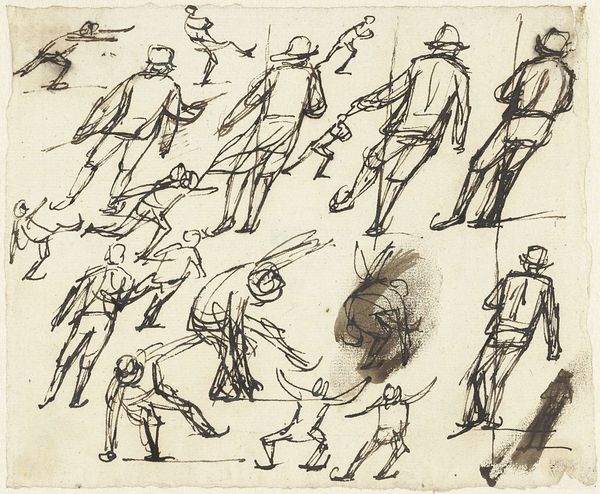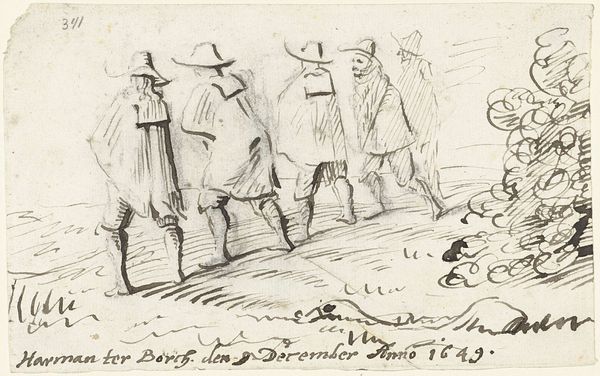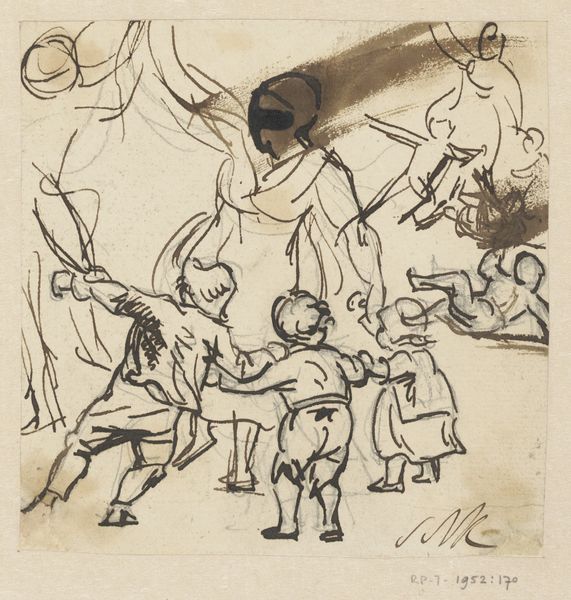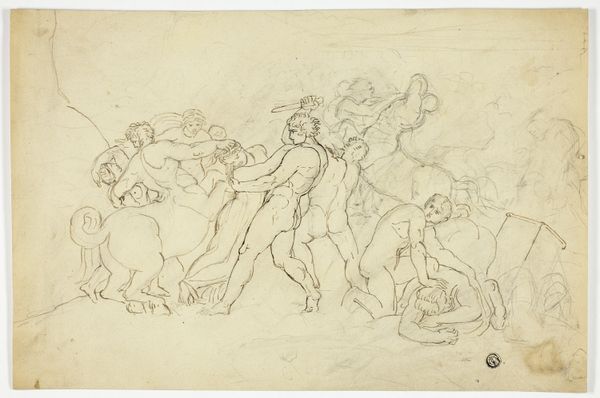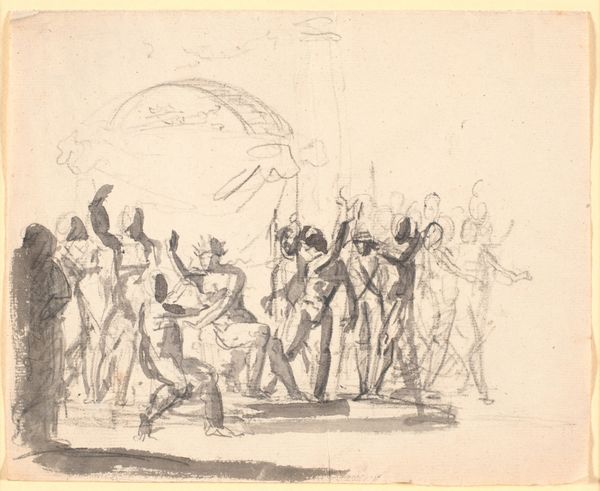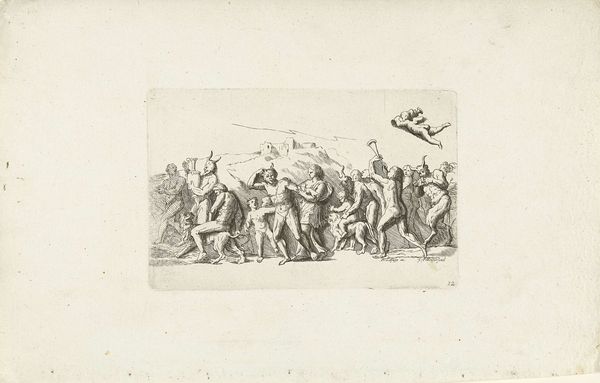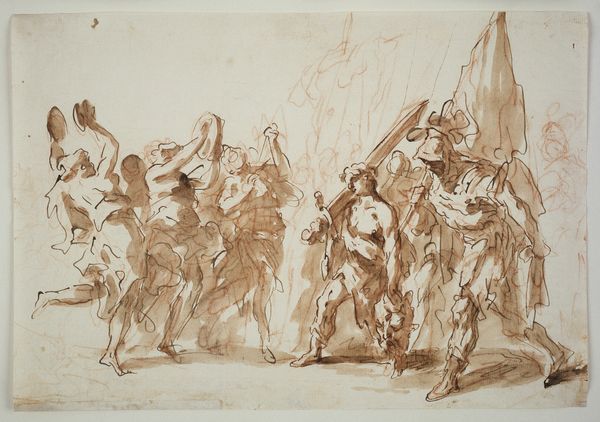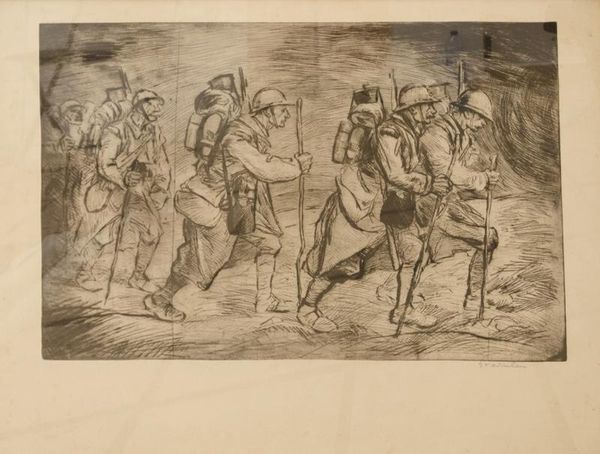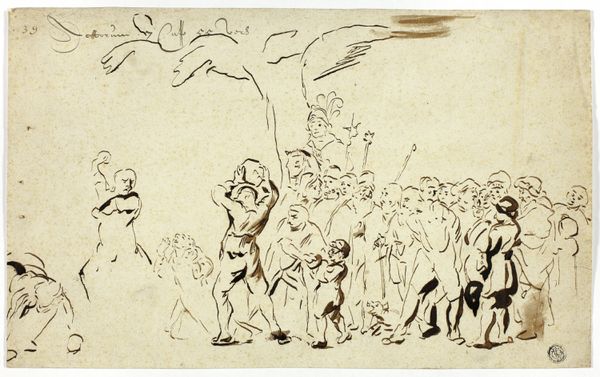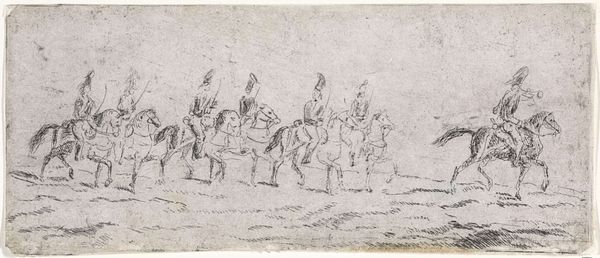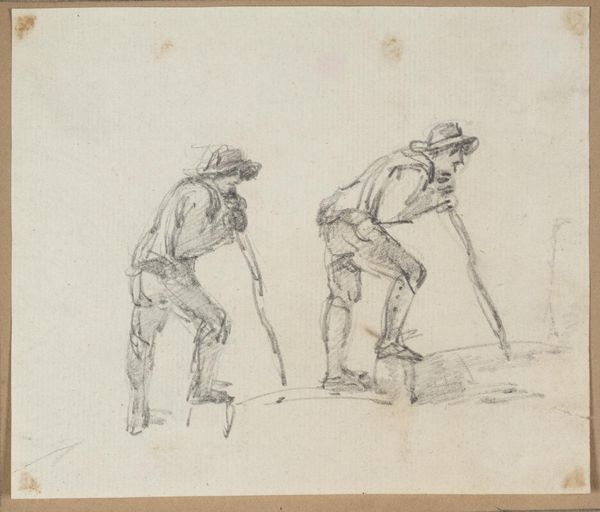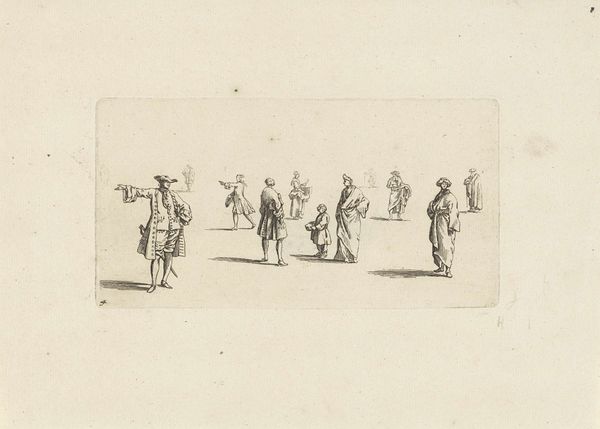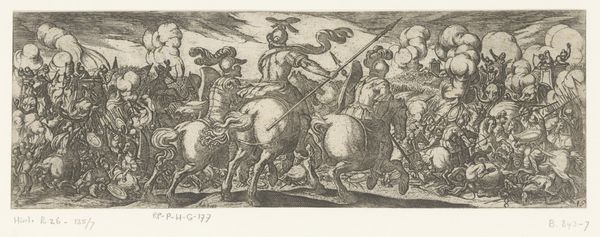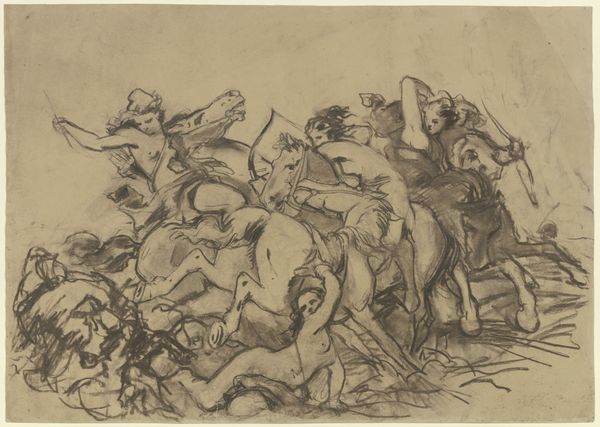
Kinderen spelen het spel Kruip door sluip door Possibly 1650 - 1651
0:00
0:00
drawing, ink, pen
#
drawing
#
light pencil work
#
medieval
#
quirky sketch
#
dutch-golden-age
#
pen sketch
#
figuration
#
personal sketchbook
#
ink
#
sketchwork
#
ink drawing experimentation
#
pen-ink sketch
#
sketchbook drawing
#
pen
#
genre-painting
#
storyboard and sketchbook work
#
sketchbook art
Dimensions: height 95 mm, width 243 mm
Copyright: Rijks Museum: Open Domain
Curator: This playful sketch before us, "Kinderen spelen het spel Kruip door sluip door," which translates to "Children playing the game Crawl Through, Sneak Through" is a creation of Harmen ter Borch, likely from around 1650. Editor: It’s quite lovely, capturing the giddy chaos of children at play! There's something raw and immediate about it, like a fleeting memory captured on paper with quick strokes. The sparseness invites imagination. Curator: Ter Borch rendered it in pen and ink, and what strikes me is the fluidity, the sense of effortless movement despite its simplicity. It suggests he caught the essence of the game in action. Considering that paper would have been relatively precious back then, what do you imagine was the occasion for Ter Borch to sketch this? Editor: That's a key question. Paper wasn't cheap, and ink-making was a whole process—so this wasn’t idle doodling. He’s observing, right? Taking note of not just the gestures, but also the folds of their clothes, the particular hats they are wearing...he may be recording information. Almost a pattern-making exercise of future possibilities for the characters of people he may paint. Curator: Perhaps. The loose, almost whimsical lines do remind me of a sketchbook exploration, a kind of visual note-taking of the everyday world around him. Editor: It makes me wonder, too, about the societal context. What kind of labour are their clothes signalling, what did it mean for the children themselves at the time the game took place? Children at that time would probably work… Curator: A poignant contrast to the innocence of the game they play. There is something about it that brings on this feeling of nostalgia for something simpler and less regimented. Editor: Exactly. We can see, on the one hand, the evidence for an increasingly global material world around them, but on the other the simple means of children making merry of nothing. What a dichotomy. Curator: The materiality, that you’re drawing out now, almost invites an invitation into ter Borch’s 17th-century world, doesn't it? These children and their simple game come to life on paper, even through all these centuries, reminding us of our shared humanity. Editor: Absolutely. It reminds me to pay closer attention to the seemingly small and mundane moments of life because they’re often richer in material history and emotion than the grand pronouncements we so often privilege.
Comments
No comments
Be the first to comment and join the conversation on the ultimate creative platform.
